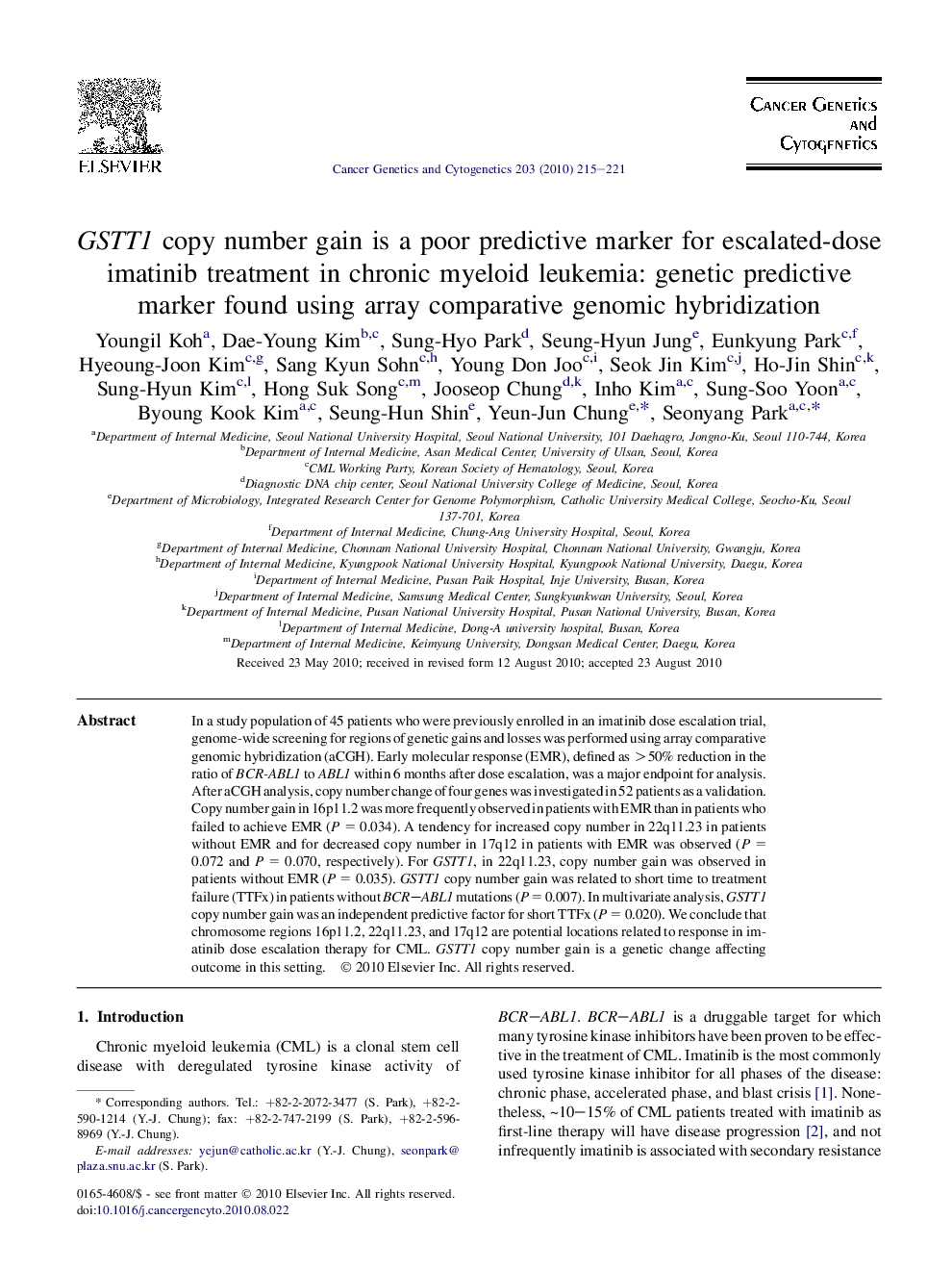| Article ID | Journal | Published Year | Pages | File Type |
|---|---|---|---|---|
| 2110559 | Cancer Genetics and Cytogenetics | 2010 | 7 Pages |
In a study population of 45 patients who were previously enrolled in an imatinib dose escalation trial, genome-wide screening for regions of genetic gains and losses was performed using array comparative genomic hybridization (aCGH). Early molecular response (EMR), defined as >50% reduction in the ratio of BCR-ABL1 to ABL1 within 6 months after dose escalation, was a major endpoint for analysis. After aCGH analysis, copy number change of four genes was investigated in 52 patients as a validation. Copy number gain in 16p11.2 was more frequently observed in patients with EMR than in patients who failed to achieve EMR (P = 0.034). A tendency for increased copy number in 22q11.23 in patients without EMR and for decreased copy number in 17q12 in patients with EMR was observed (P = 0.072 and P = 0.070, respectively). For GSTT1, in 22q11.23, copy number gain was observed in patients without EMR (P = 0.035). GSTT1 copy number gain was related to short time to treatment failure (TTFx) in patients without BCR–ABL1 mutations (P = 0.007). In multivariate analysis, GSTT1 copy number gain was an independent predictive factor for short TTFx (P = 0.020). We conclude that chromosome regions 16p11.2, 22q11.23, and 17q12 are potential locations related to response in imatinib dose escalation therapy for CML. GSTT1 copy number gain is a genetic change affecting outcome in this setting.
